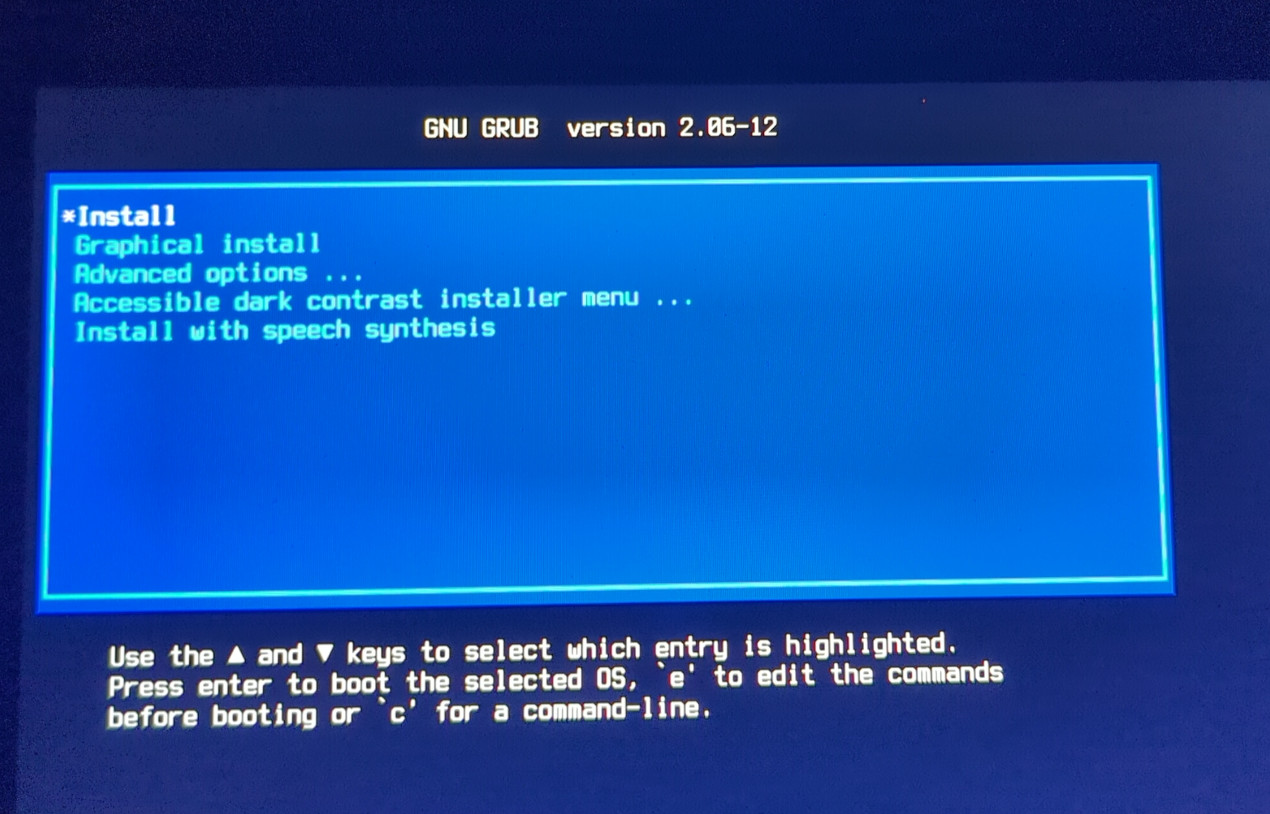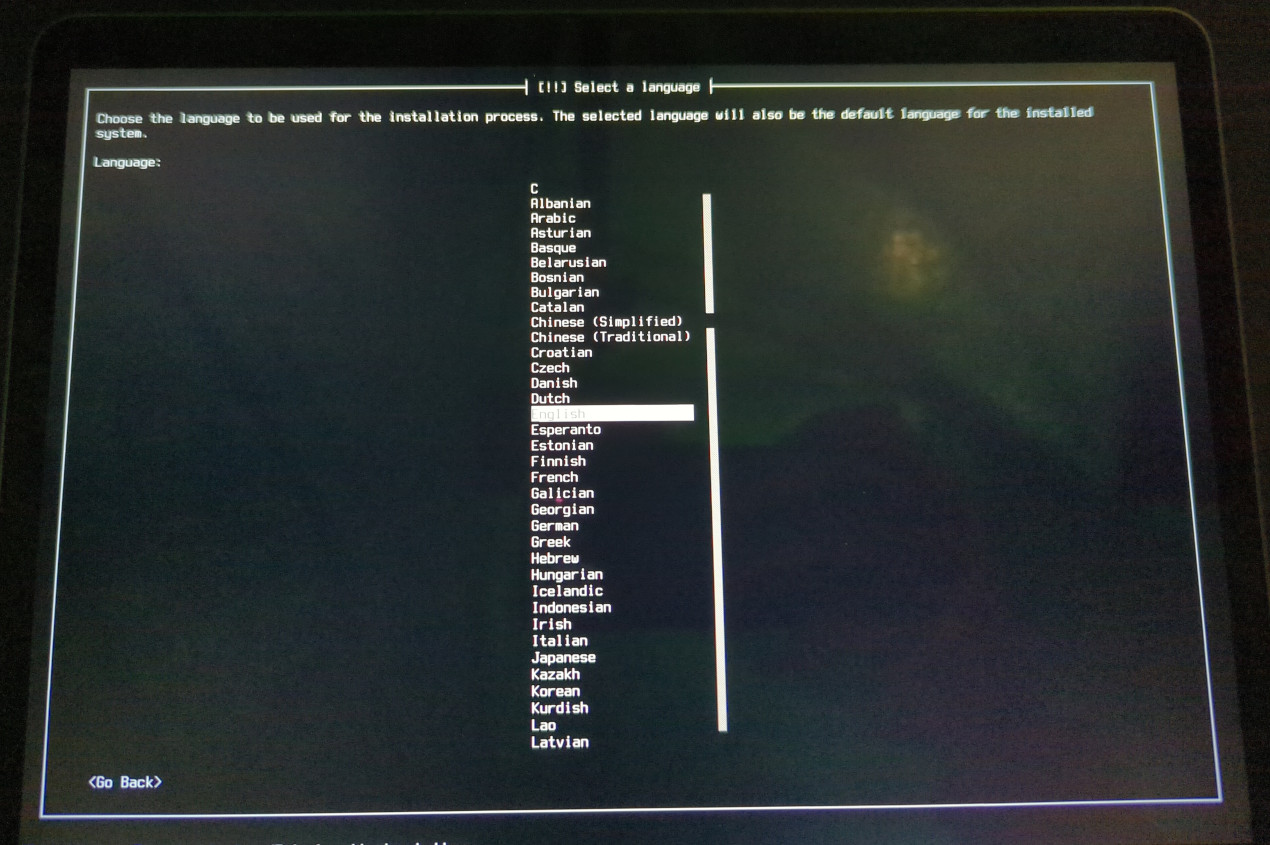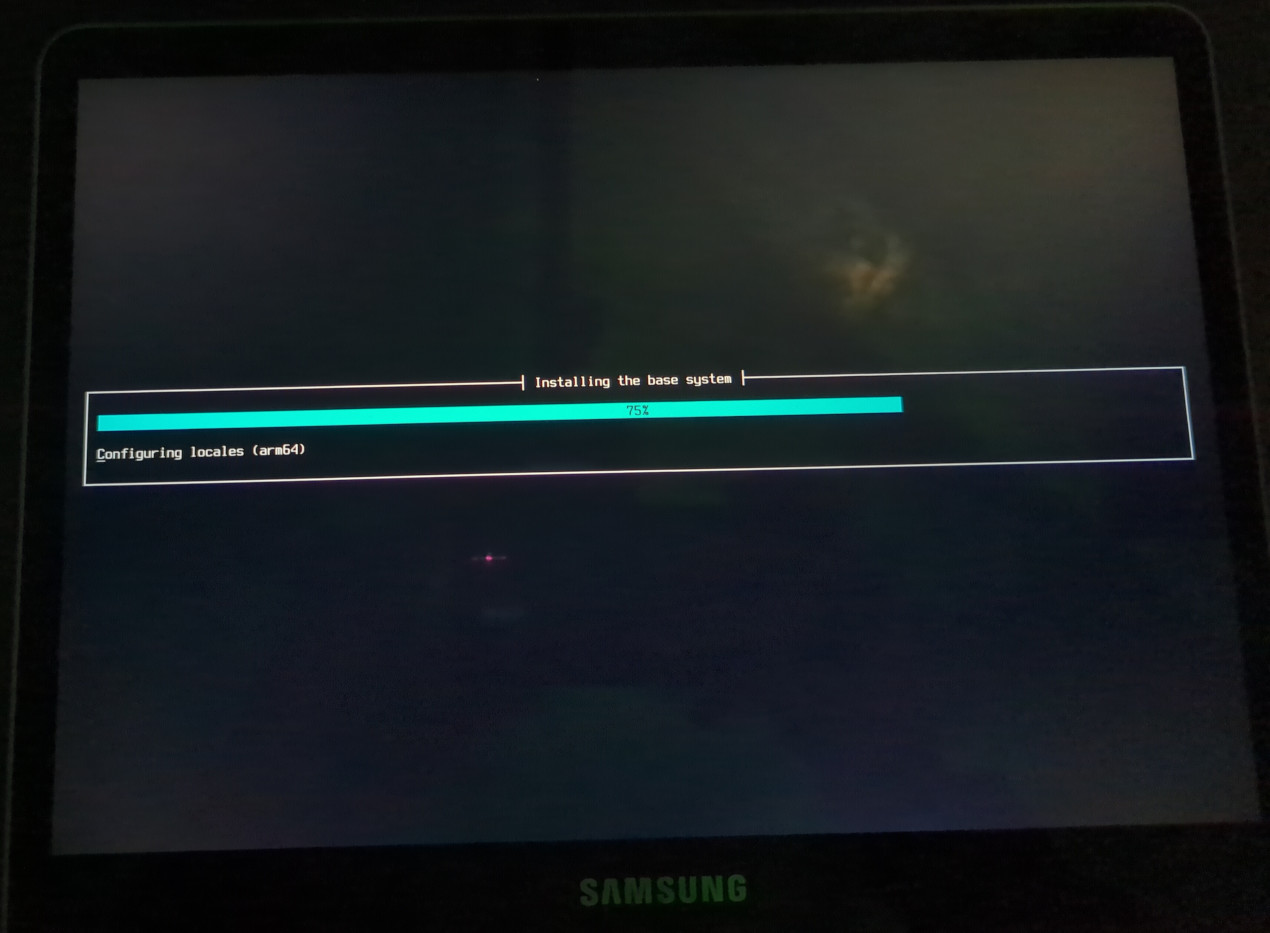- Home
- FAQ
- Download
- Git
- Buy Libreboot preinstalled
- Install
- Docs
- News
- Bugs
- Contact
- Donate
- Other coreboot distros
System Configuration
Hardware: Samsung Chromebook Plus XE513C24 (gru_kevin)
Libreboot: 2023-04-23
Operating System: Debian Bookworm RC2
https://wiki.debian.org/Firmware
Install Media Preparation
Follow the Debian installation instructions in the link below:
https://www.debian.org/devel/debian-installer/
At the time of this install Debian Bookworm RC2 was recommended on the download page and I selected the DVD image to have all the packages available when offline (3.7 gigabyte iso). See the notes below about alternately using the netinst version.
https://cdimage.debian.org/cdimage/bookworm_di_rc2/arm64/iso-dvd/
Write the iso file to a micro sdcard. Replace sdcard_device below with the appropriate device path on your system.
# dd if=debian-bookworm-DI-rc2-arm64-DVD-1.img of=/dev/sdcard_device bs=1M status=progress; syncInstallation
- Insert the micro sdcard into the slot on the Chromebook.
- Power on the Chromebook.
The system automatically found an EFI image (efi/boot/bootaa64.efi), but after loading it the “Synchronous Abort” handler activated and the chromeboot would reboot.
Since libreboot/uboot has a 2 second pause at the beginning to stop autoboot if desired I paused autoboot and it dropped me to the uboot command line. Per the suggestion from alpernebbi on libreboot IRC I looked for the grub EFI image on the micro sdcard and started that up instead. Below are the series of uboot commands I used to understand the media and partition structure. Device 1 is the micro sdcard slot, and in this case the efi partition is 2.
Hit any key to stop autoboot: 0
=> mmc list
mmc@fe320000: 1
mmc@fe330000: 0
=> mmc dev 1
switch to partitions #0, OK
mmc1 is current device
=> mmc part
Partition Map for MMC device 1 -- Partition Type: DOS
Part Start Sector Num Sectors UUID Type
1 0 7766016 00000000-01 83
2 7766016 15168 00000000-02 ef Boot
=> ls mmc 1:2
efi/
168 ubootefi.var
1 file(s), 1 dir(s)
=> ls mmc 1:2 efi/boot
./
../
872448 bootaa64.efi
4289984 grubaa64.efi
2 file(s), 2 dir(s)
=>The following two commands are the ones that were needed to boot the operating system.
=> load mmc 1:2 $loadaddr efi/boot/grubaa64.efi
4289984 bytes read in 187 ms (21.9 MiB/s)
=> bootefi $loadaddrThe grub text menu popped up at this point. See the screen shot below. I found the first option “Install” provided the easiest install experience as everything was in text mode and easy to read. The “Graphical install” worked also, however the screen resolution was so high that all the text and buttons were quite small on the display and harder to read.

At this point the installation proceeded normally.


Some users have mentioned experiencing corruption of the first partition after installing Debian Bookworm on a Libreboot / uboot xe513c24 system. This is possibly due to the experimental nature of the libreboot / uboot system at this time.
One potential workaround is to leave some unused space at the beginning of the drive before the first partition. This can be done by manually partitioning during install and configuring the first partition to start 100MB or so from the start of the drive.
Also, per instructions from alpernebbi on IRC, when you arrive at the stage where the grub bootloader is installed take special note to select yes to the option to “Force installation to removable media path”, and also say no to the option to “Update NVRAM variables”. If one selects yes on updating NVRAM variables this can also lead to partition corruption in some instances.
Lastly when rebooting into your new system you will likely experience the same synchronous abort issue mentioned above. You can use the same method to pause the uboot script and drop to the uboot prompt to load and boot the grub efi image. Depending on how you partitioned the internal emmc drive during install, the partition number may vary, but below are the applicable commands on my system. The internal device is 0, and the efi partition was 1.
=> load mmc 0:1 $loadaddr efi/boot/grubaa64.efi
4289984 bytes read in 187 ms (21.9 MiB/s)
=> bootefi $loadaddrOnce booted into your Debian Bookworm system you can open a shell as root and go to the boot efi path to copy the grubaa64.efi file and overwrite it onto the bootaa64.efi file.
# cd /boot/efi/EFI/BOOT
# mv BOOTAA64.EFI BOOTAA64.EFI.bak
# cp grubaa64.efi bootaa64.efiBy doing this the system will boot from uboot normally without needing to drop to the uboot prompt. This will only last until the next time debian updates grub though, so you may need to repeat this as a workaround for now.
Below are a couple screen shots of the installed system running from the internal emmc.


System Functionality
Things that work:
- Wireless internet and bluetooth
- Touch screen and stylus
- Touchpad
- Audio (Speakers and headphone jack)
- Volume buttons on side of laptop.
- Graphics (the open source panfrost driver is impressive)
- Playing videos
Things that do not work:
- Powering off. You can shutdown in Debian and the system goes through the normal shut down sequence, but then remains on indefinitely (blue light on side near power button). You have to hold the power button down for 10 seconds or so to completely power off the system.
Markdown file for this page: https://libreboot.org/docs/uboot/uboot-debian-bookworm.md
Subscribe to RSS for this site
This HTML page was generated by the Libreboot Static Site Generator.